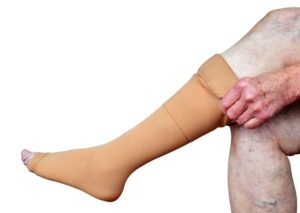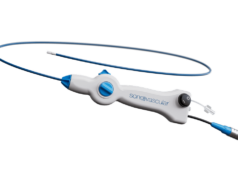 Postprocedural compression of one to two weeks after superficial venous incompetence (SVI) treatment is associated with reduced pain compared with a shorter duration. This is according to a study published in the August edition of the British Journal of Surgery (BJS).
Postprocedural compression of one to two weeks after superficial venous incompetence (SVI) treatment is associated with reduced pain compared with a shorter duration. This is according to a study published in the August edition of the British Journal of Surgery (BJS).
Authors Abduraheem H Mohamed (Hull York Medical School, Hull, UK) and colleagues note that, while international guidelines recommend postprocedural compression when treating symptomatic SVI, there is no agreed timescale for this. In order to investigate the optimal application of postprocedural compression, they carried out a systematic review of randomised controlled trials (RCTs).
Mohamed et al write that they used the UK National Institute for Health and Care Excellence’s Healthcare Databases Advanced Search Engine to identify all English-language RCTs of compression following treatment for SVI. Postprocedural pain, venous thromboembolism (VTE), health-related quality of life (HRQoL) and anatomical occlusion were the main outcomes of interest, they note.
The investigators included a total of 18 studies comprising 2,584 treated limbs in their systematic review. Compression was compared with no compression in four studies, nine studies compared different durations of compression, and a further five compared different types of compression, Mohamed and colleagues relay.
Writing in BJS, the authors report that a one to two week period of compression was associated with a mean reduction of 11 (95% confidence interval [CI] 8–13) points in pain score on a 100mm visual analogue scale compared with shorter duration (p<0.001). Mohamed et al also reveal that this was associated with improved HRQoL and patient satisfaction, however note that greater than two weeks’ compression did not add further benefit.
“There was low-quality evidence suggesting that 35mmHg compression with eccentric thigh compression achieved lower pain scores than lower interface pressures,” the authors add, noting also, “there were no significant differences in [VTE] rates or technical success in any group, including no compression”.
In their conclusion, Mohamed et al acknowledge the evidence gaps that persist: “The optimal interface pressure and type of compression, and the impact on [VTE] risk, remain to be determined”.









